Shipping is changing drastically and not all changes are liked by shipowners, ship managers, and seafarers.
But if there was one change that is being welcomed by all is this…
Shipping industry now takes every personal injury or death very seriously.
For tanker operators, the oil Majors even require a death onboard any of their vessels to be reported to them.
We have to consider this change as a welcome change.
The KPI for Personal injuries and deaths need to be set to zero, an absolute zero.
But one area where we keep hearing about the loss of life or injuries for that related to embarking and disembarking of pilots.
We need to bring these to zero as well.
But that won’t happen just by thinking about it.
Pilot embarkation & disembarkation is a very routine but risky operation.
We keep hearing the tragic news of the death of pilots while embarking and disembarking from the ships.
All of these accidents are avoidable.
So what we, seafarers can do to avoid these accidents?
Well, we can ensure that the boarding arrangements are adequate and safe for pilot embarkation and disembarkation.
Let us discuss how it is done.
Pilot ladder requirement
The principle requirement for the pilot ladders is governed by Regulation 23, chapter V of the SOLAS.
There are few other references that talk about the construction of pilot ladders.
But if we need to bring the accidents due to pilot ladders to zero, we need to address three things.
- We need to ensure that pilot ladders onboard are made of the required material and as per the guidelines
- We need to make sure that the pilot ladders are maintained properly
- We need to make sure that the pilot ladders are used or rigged correctly
Let us understand each of these points in more detail.
Requirements for the construction
The first requirement is that the pilot ladder need to be certified by the manufacturer.
This means that the pilot ladder now no more can be made by the ship staff.
These need to be supplied and the manufacturer need to certify these to be complying with the SOLAS.
Then there are requirements for
- The step of the pilot ladder
- Location of the Spreader
- Ropes used in the making of the pilot ladder
- Side ropes
- The distance between each step
All these requirements are clearly defined in the IMPAHQ poster that all the vessels are required to have on the bridge.
Requirements for the maintenance of Pilot ladders
As per SOLAS ch V/Reg 23, all pilot ladders used for pilot transfer shall be clearly identified with a tag or other permanent marking.
The marking is required for the identification of the pilot ladder.
The marking could be by attaching a piece of canvas and stenciling the number on it.
But the best way of marking is by use of a scafftag.
Other SOLAS requirement is that the appliances shall be kept clean, properly maintained and regularly inspected.
The inspection of pilot ladders needs to be done as per the PMS routine of the company.
But what do we mean by properly maintained and what can we do to ensure that pilot ladder is appropriate for the use?
1. Ropes
The first thing that needs to be checked is the condition of ropes.
Most of the pilot ladder incident that occurs is usually because of the parting of either the ladder rope or the side ropes.
Why do these rope part and what can be done to avoid this?
Use of Manila rope is one of the requirements for pilot ladders.
There is a reason for this requirement.
Manila rope has an absorbing quality which ensures that the rope is always non-slippery.
That makes it the first choice for the purposes like stage rigging and use in the making of pilot ladders.
But this quality is also a concern when it comes to absorbing seawater and sunlight which may harden it or rot it over a longer period of exposure.
This can sometimes trick a seaman.
A manila rope which might look in excellent condition but which has been exposed to sunlight, sea water or even chemicals might have lost its internal strength.
Negligence of the seafarers to inspect and discard any obvious damaged rope and pilot ladder is one thing.
But a bad rope with the excellent visual condition can also be the cause of pilot ladder ropes giving way.
The best way to avoid degrading of the pilot ladder rope is to minimize its exposure to seawater, sunlight, and chemicals by securing it nicely when not required.
However considering that the visual inspection of manila ropes used in the pilot ladder can sometimes give a false indication of its condition & strength, I am personally of the opinion that pilot ladder should be changed with a new one after a fixed interval of time, irrespective of its condition.
2. Steps
At an interval required as per the PMS of the ship, the pilot ladder should be opened up and laid on the deck.
The close inspection of each of the pilot ladder steps must be made to identify any steps that show the early signs of cracking.
Apart from that, each step must be secured firmly and should be straight and not inclined towards any side.
Requirements for use of pilot ladders
A good and well-maintained equipment is good as long as it is used correctly.
The pilot ladder needs to be rigged correctly for it to be considered safe.
And the first thing that needs to be considered is the location of the pilot ladder deployment area.
As per SOLAS, the area needs to be
- clear of possible discharges of the ship (for example scupper plus).
- within the parallel body length of the ship and as far as practicable, within the midship half length of the ship
- Each step must rest firmly against the ship’s side.
The second consideration is how the pilot ladder is secured to the ship.
If the pilot ladder is stored on a winch, the pilot ladder must not be hanging from the winch. This must be secured on the deck with the shackles.
When the freeboard of the ship is more than 9 meters, we are required to use the combination arrangement for pilot embarking.
In this case, the pilot ladder and man-ropes need to be secured at a point about 1.5 meters above the bottom platform of the accommodation ladder.
This is usually achieved by attaching portable magnets the ship’s side and securing the pilot ladder to these magnets.
There are a few other points that we need to be aware of while securing the pilot ladder.
If the pilot ladder is secured at its ends (the thimble at the end of the pilot ladder rope), it can be secured with the appropriate shackles.
However if Pilot ladder needs to be secured at the intermediate length, it need to be secured with rolling hitch knot.
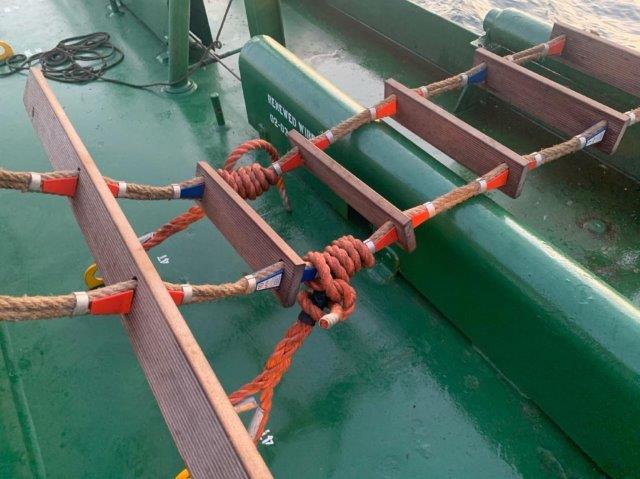 Use of shackles for securing the ladder at intermediate length is a big no-no and dangerous.
Use of shackles for securing the ladder at intermediate length is a big no-no and dangerous.
The crew must check that the pilot ladder step is not resting on the fish plate. This can snap down once someone puts his weight on the pilot ladder.
In fact, any of the pilot ladder steps must not be resting on any of the ship’s structure.
The pilot would be lucky if he gets warning for inappropriate securing of the pilot ladder after climbing for a few steps.
There have been incidents where the pilot ladder step snapped down and the pilot fell from a considerable height.
Access to deck
Once the pilot boards the ship the area where he would keep his first few steps need to be clear.
IMO Resolution A. 1045(27) gives the dimension of this area that needs to be kept clear of any obstructions.
The dimensions of the are that need to be kept clear are
- 915mm in length measured longitudinally along ship’s length
- 915mm in width measured inward from the ship’s side
- 2200mm in height measured from the main deck
As a good practice this area is marked on the deck on each side of the ship.
Conclusion
In layman’s mind, the embarking and disembarking of pilot would be a routine and non-risky task.
But the number of accidents during this operation points otherwise.
All these incidents can be avoided by having a set of best practices related to use of pilot ladders.
Pilot ladders onboard should be of correct specification and ship staff should have certificates for the pilot ladders onboard.
Pilot ladders should be secured when not in use.
Exposure to sunlight and seawater should be minimised as far as possible. On longer voyages, the pilot ladder should be kept under shelter such as in deck store.
The condition of ladder ropes, steps as well as other fittings should be checked at least monthly and before use.
Share this:

About Capt Rajeev Jassal
Capt. Rajeev Jassal has sailed for over 24 years mainly on crude oil, product and chemical tankers. He holds MBA in shipping & Logistics degree from London. He has done extensive research on quantitatively measuring Safety culture onboard and safety climate ashore which he believes is the most important element for safer shipping.
Search Blog
15 Comments


The following statement in the article is factually incorrect...'Pilot ladder needs to be secured with appropriate shackles to a strong point on the deck. Use of ropes to secure the pilot ladder is a big no-no.' Ropes should ALWAYS be used shackles should NEVER be used. This information in incorrect and highly dangerous. I am a pilot and have been for 19 years. We struggle to improve safety when such incorrect information is shared.

My ex-husband and I had always managed to stay friendly after our divorce in February 2017. But I always wanted to get back together with him, All it took was a visit to this spell casters website last December, because my dream was to start a new year with my husband, and live happily with him.. This spell caster requested a specific love spell for me and my husband, and I accepted it. And this powerful spell caster began to work his magic. And 48 hours after this spell caster worked for me, my husband called me back for us to be together again, and he was remorseful for all his wrong deeds. My spell is working because guess what: My “husband” is back and we are making preparations on how to go to court and withdraw our divorce papers ASAP. This is nothing short of a miracle. Thank you Dr Emu for your powerful spells. Words are not enough. Email emutemple@gmail.com Phone/WhatsApp +2347012841542.

I want to genuinely thank Dr Ayoola for making my dream come through. I was on the internet when I saw people posting and talking about Dr Ayoola. On How he has help them in winning lottery. My name is Gerald Muswagon this is my story on how I win $10 million After reading the article about Dr Ayoola I contacted him I told him to help me win lottery he respond to me by saying he will help me after working with him he assured me that I will win. Which I believe. After working with Dr Ayoola he gave me a number and ask me to go and play it which I did today I’m here shearing a testimony about this same man Dr Ayoola help me to win $10 million dollars all thanks to you Dr I will keep taking about your good because you are a man of your word I hope people that really need this will come across it for you to help them as well. If you want to win big in lottery contact Dr Ayoola today and be rest assured of winning contact him via email drayoolasolutionhome@gmail. com or https://www.facebook.com/Dr-Ayoola-105640401516053/ text or call +14809032128

Are you searching for a real spell caster ? It is amazing how quickly Dr. Excellent brought my husband back to me. My name is Heather Delaney. I married the love of my life Riley on 10/02/15 and we now have two beautiful girls Abby & Erin, who are conjoined twins, that were born 07/24/16. My husband left me and moved to be with another woman. I felt my life was over and my kids thought they would never see their father again. I tried to be strong just for the kids but I could not control the pains that tormented my heart, my heart was filled with sorrows and pains because I was really in love with my husband. I have tried many options but he did not come back, until i met a friend that directed me to Dr. Excellent a spell caster, who helped me to bring back my husband after 11hours. Me and my husband are living happily together again, This man is powerful, contact Dr. Excellent if you are passing through any difficulty in life or having troubles in your marriage or relationship, he is capable of making things right for you. Don\'t miss out on the opportunity to work with the best spell caster. Here his contact. Call/WhatsApp him at: +2348084273514 \" Or email him at: Excellentspellcaster@gmail.com , For more information visit his website:https://drexcellentspellcaster.godaddysites.com

Are you searching for a real spell caster ? It is amazing how quickly Dr. Excellent brought my husband back to me. My name is Heather Delaney. I married the love of my life Riley on 10/02/15 and we now have two beautiful girls Abby & Erin, who are conjoined twins, that were born 07/24/16. My husband left me and moved to be with another woman. I felt my life was over and my kids thought they would never see their father again. I tried to be strong just for the kids but I could not control the pains that tormented my heart, my heart was filled with sorrows and pains because I was really in love with my husband. I have tried many options but he did not come back, until i met a friend that directed me to Dr. Excellent a spell caster, who helped me to bring back my husband after 11hours. Me and my husband are living happily together again, This man is powerful, contact Dr. Excellent if you are passing through any difficulty in life or having troubles in your marriage or relationship, he is capable of making things right for you. Don\'t miss out on the opportunity to work with the best spell caster. Here his contact. Call/WhatsApp him at: +2348084273514 \" Or email him at: Excellentspellcaster@gmail.com , For more information visit his website:https://drexcellentspellcaster.godaddysites.com

Are you searching for a real spell caster ? It is amazing how quickly Dr. Excellent brought my husband back to me. My name is Heather Delaney. I married the love of my life Riley on 10/02/15 and we now have two beautiful girls Abby & Erin, who are conjoined twins, that were born 07/24/16. My husband left me and moved to be with another woman. I felt my life was over and my kids thought they would never see their father again. I tried to be strong just for the kids but I could not control the pains that tormented my heart, my heart was filled with sorrows and pains because I was really in love with my husband. I have tried many options but he did not come back, until i met a friend that directed me to Dr. Excellent a spell caster, who helped me to bring back my husband after 11hours. Me and my husband are living happily together again, This man is powerful, contact Dr. Excellent if you are passing through any difficulty in life or having troubles in your marriage or relationship, he is capable of making things right for you. Don\'t miss out on the opportunity to work with the best spell caster. Here his contact. Call/WhatsApp him at: +2348084273514 \" Or email him at: Excellentspellcaster@gmail.com , For more information visit his website:https://drexcellentspellcaster.godaddysites.com

Are you searching for a real spell caster ? It is amazing how quickly Dr. Excellent brought my husband back to me. My name is Heather Delaney. I married the love of my life Riley on 10/02/15 and we now have two beautiful girls Abby & Erin, who are conjoined twins, that were born 07/24/16. My husband left me and moved to be with another woman. I felt my life was over and my kids thought they would never see their father again. I tried to be strong just for the kids but I could not control the pains that tormented my heart, my heart was filled with sorrows and pains because I was really in love with my husband. I have tried many options but he did not come back, until i met a friend that directed me to Dr. Excellent a spell caster, who helped me to bring back my husband after 11hours. Me and my husband are living happily together again, This man is powerful, contact Dr. Excellent if you are passing through any difficulty in life or having troubles in your marriage or relationship, he is capable of making things right for you. Don\'t miss out on the opportunity to work with the best spell caster. Here his contact. Call/WhatsApp him at: +2348084273514 \" Or email him at: Excellentspellcaster@gmail. com

Hi, this is real testimony of a spell doctor who helped me bring back my fiance, who left i and the kids for 10 month. i had lost all hope about my fiance coming back home again. if you’re going through a tough time in your marriage or relationship, or want back your Ex. contact him on droluspirittemple@gmail com or whatapp +2347053381933 you can visit doctor olu on is websies: >> https://doctor-olu-spell-temple.b12sites.com/ FBpage: https://www.facebook.com/drOluspellTemple/

I URGENTLY NEED A LOVE SPELL CASTER TO HELP ME GET MY EX BACK CONTACT (DR DAVID) AWESOMESPELLTEMPLE@YAHOO.COM OR +2347051149457 I want to share my wonderful testimony how I got back my husband back, who I sworn ever to be with until when he left me to another woman for no reason and I try to make things work for both of us yet things were getting worse and I love him so much and there is nothing I could do to get my husband back until I saw a testimony share by a woman called Rachel from Florida on the internet talking about a powerful spell caster who brought her husband back within 24 hours and I decide to give it a try and to my greatest surprise he also did it for me just as he did for Rachel and I have a lot of people complaining of fake spell caster but this one I met was a real spell caster who help me to solve my problem I have no solution to, I introduce many of my best friends that have a similar problems, and their problem were solve with the great help of DR David, who help them to get back their lovers within 24 hours. I am so happy that my husband is back to me again, and the most surprising thing is that our love is very strong, every day is happiness and joy. and There is nothing like being with the man you love. I am so happy my love is back to me with the help of DR David . if you have similar problem I will advise you to contact him ,he is there to help you and put a smile on your face as he did to me and others you can also WhatsApp him +2347051149457 or Email him at :awesomenesspelltemple@gmail.com or view his website for more review: https://63e1caad0959a.site123.me/

David is totally top notch. I would never trust anyone with my problems. He is completely reliable and compassionate and his spells are truly some kind of powerful magic. David has definitely gotten me through some really tough times and my husband who have left me for another woman is now back with me with David spells. David is worth talking about and deserve recognition because is totally a genius. Anyone who needs help in his/her relationship should kindly contact Dr.David. Email:awesomenesspelltemple@gmail.com is totally top notch. I would never trust anyone with my problems. He is completely reliable and compassionate and his spells are truly some kind of powerful magic. David has definitely gotten me through some really tough times and my husband who have left me for another woman is now back with me with David spells. dr david is worth talking about and deserve recognition because is totally a genius. Anyone who needs help in his/her relationship should kindly contact Dr DAVID Email:awesomenesspelltemple@gmail.com

Discover why Infinite Digital Recovery is one of the most reviewed and trusted cryptocurrency recovery firms. Learn about their no-upfront payment policy, proven expertise, and client-focused approach. As cryptocurrencies continue to shape the global financial system, cases of wallet loss, scams, and unauthorized transactions have surged. The growing demand for trustworthy recovery solutions has made companies like Infinite Digital Recovery stand out. Recognized for its professionalism, transparency, and consistent success, the firm has established itself as a leading name in the field of cryptocurrency recovery. No Upfront Payment Policy A major factor behind Infinite Digital Recovery’s popularity is its no-upfront payment model. Clients do not pay before tangible results are achieved. This approach fosters confidence and accountability, offering reassurance to victims who may have already suffered financial loss. The company’s results-driven structure distinguishes it from competitors that often require advance fees. Expertise in Digital Asset Recovery The company’s team consists of experts skilled in blockchain forensics, cybersecurity, and financial investigation. By leveraging advanced digital tracing tools and forensic analysis, Infinite Digital Recovery helps clients locate and recover lost, stolen, or inaccessible cryptocurrencies. Their transparent communication and systematic investigation methods ensure that clients stay informed throughout the process. Proven Track Record of Success Client testimonials and independent reviews consistently highlight Infinite Digital Recovery’s high success rate and professional conduct. Over time, the firm has built a reputation for efficiently handling complex recovery cases, from scam-related losses to wallet access issues. This reliability has made Infinite Digital Recovery one of the most reviewed and trusted crypto recovery services online. Client-Centered Approach At the core of Infinite Digital Recovery’s operations is a client-first philosophy. Each case is treated with confidentiality, urgency, and precision. The firm values clear communication, offering realistic expectations and updates throughout the process. This commitment to integrity and transparency has strengthened its reputation within the global cryptocurrency community. Due Diligence and Safe Engagement Despite the company’s strong reputation, cryptocurrency owners are encouraged to perform due diligence before hiring any recovery service. Always confirm official communication channels, verify credentials, and never share private keys or wallet access codes. Responsible action helps ensure that recovery efforts remain secure and effective. Conclusion With digital assets now at the heart of modern finance, recovery services play a crucial role in protecting investor confidence. Infinite Digital Recovery stands out for its transparent operations, technical expertise, and performance-based approach. Its track record of client satisfaction and ethical practice makes it a leading choice for those seeking to recover lost or stolen cryptocurrency. To initiate your cryptocurrency recovery process, please get in touch with Infinite Digital Recovery. Email: infinitedigitalrecovery@techie.com WH47SAPP: + 1 323** 554** 3592

I have been suffering from Herpes for the past 1 years and 8 months, and ever since then I have been taking series of treatment but there was no improvement until I came across testimonies of Dr. Silver on how he has been curing different people from different diseases all over the world, then I contacted him as well. After our conversation he sent me the medicine which I took according to his instructions. When I was done taking the herbal medicine I went for a medical checkup and to my greatest surprise I was cured from Herpes. My heart is so filled with joy. If you are suffering from Herpes or any other disease you can contact Dr. Silver today on this Email address: drsilverhealingtemple@gmail.com

HOW TO GET YOUR EX BACK WITH YOU NOW!!! I have something to share with you!!! There is a great joy in my heart which I want to share with everyone. My name is Gunn Jenssen Faith . I had a misunderstanding with my lover several months ago; which led us to break up and he never wanted to hear my voice again. But as time went on, a good friend of mine recommended Father Agbon who could help me with Love Spell to get my man back. At first, I thought the idea of a love spell was strange,but was willing to give it a try because i really love my boyfriend. For the first time I was scared to contact the Father Agbon because I was not sure if what they did was against my religion. But my friend assured me that they only use Spell which is safe and has no side effects. I felt a little better and decided to contact Father Agbon on his mail (fatheragbonspellcaster@gmail.com)I contacted him through his email and explained everything to him. He said that I shouldn\'t worry, that my lover will come back to me on his knees begging for forgiveness. I bought an item that he told me to buy for the preparation of the spell and assured me that my lover will come to me within 48 hours in remorse. My greatest joy now is that he actually came back to me and fell on his knees begging for forgiveness. We got back together and our relationship has been better this second time around. I have to give Father Agbon all the credit for helping us get back to a better place than where we began. The new found love that my boyfriend has for me is incredible and i can\'t wait to see what the future holds for us. Do you have any problem with your loved one? Well worry no more because Father Agbon can provide you with a spell to get him or her back. With the help of a spell just as he helped me. Contact Father Agbon via email: fatheragbonspellcaster@gmail.com Whatsapp NUM: +2349058797761

Are you searching for a real spell caster ? It is amazing how quickly Dr. Excellent brought my husband back to me. My name is Heather Delaney. I married the love of my life Riley on 10/02/15 and we now have two beautiful girls Abby & Erin, who are conjoined twins, that were born 07/24/16. My husband left me and moved to be with another woman. I felt my life was over and my kids thought they would never see their father again. I tried to be strong just for the kids but I could not control the pains that tormented my heart, my heart was filled with sorrows and pains because I was really in love with my husband. I have tried many options but he did not come back, until i met a friend that directed me to Dr. Excellent a spell caster, who helped me to bring back my husband after 11hours. Me and my husband are living happily together again, This man is powerful, contact Dr. Excellent if you are passing through any difficulty in life or having troubles in your marriage or relationship, he is capable of making things right for you. Don\'t miss out on the opportunity to work with the best spell caster. Here his contact. Call/WhatsApp him at: +2348084273514 \" Or email him at: Excellentspellcaster@gmail.com , For more information visit his website:https://drexcellentspellcaster.godaddysites.com
Leave Comment
More things to do on myseatime

MySeaTime Blogs
Learn the difficult concepts of sailing described in a easy and story-telling way. These detailed and well researched articles provides value reading for all ranks.

Seafarers Question Answers
Ask or answer a question on this forum. Knowledge dies if it remains in our head. Share your knowledge by writing answers to the question

MySeaTime Podcast
This podcast on the maritime matters will provide value to the listeners. Short, crisp and full of value. Stay tuned for this section.


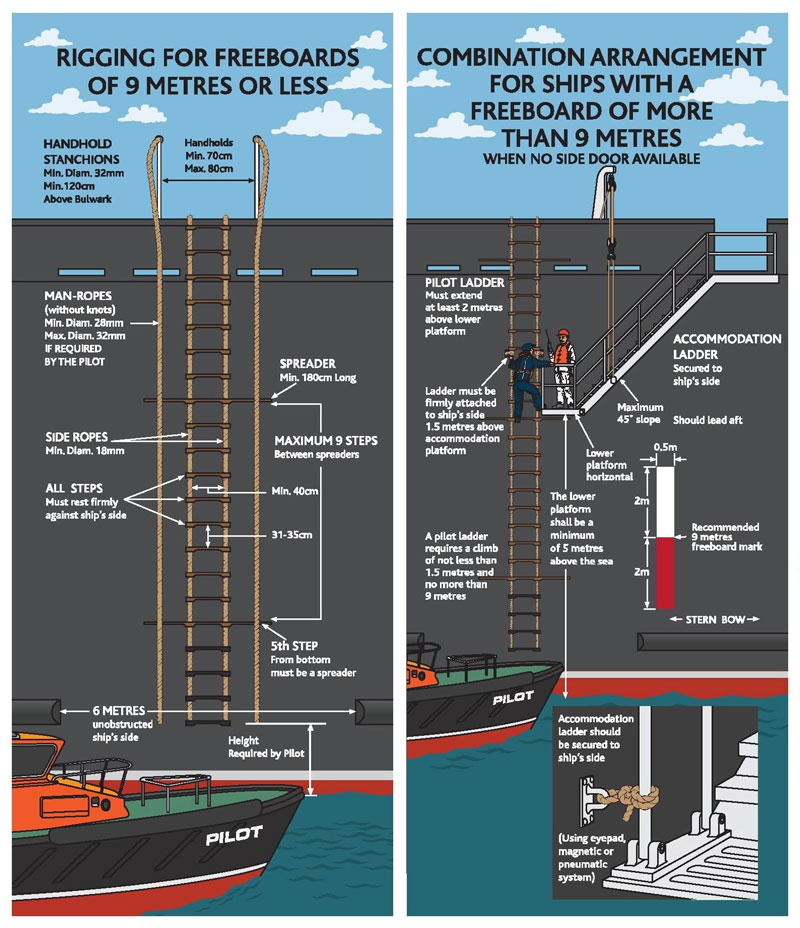
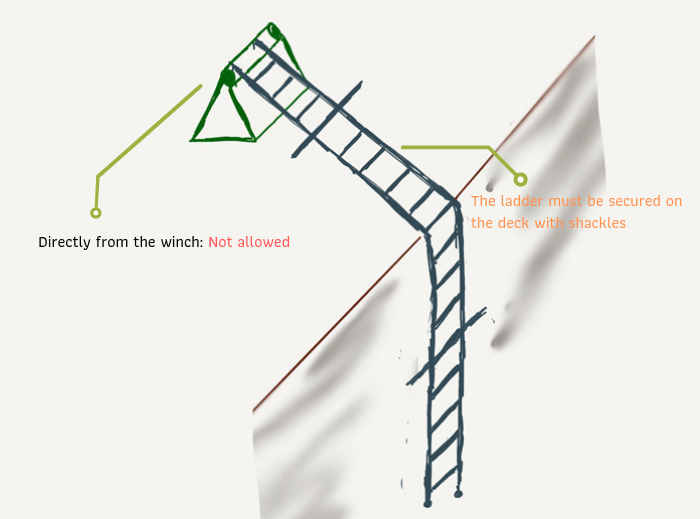
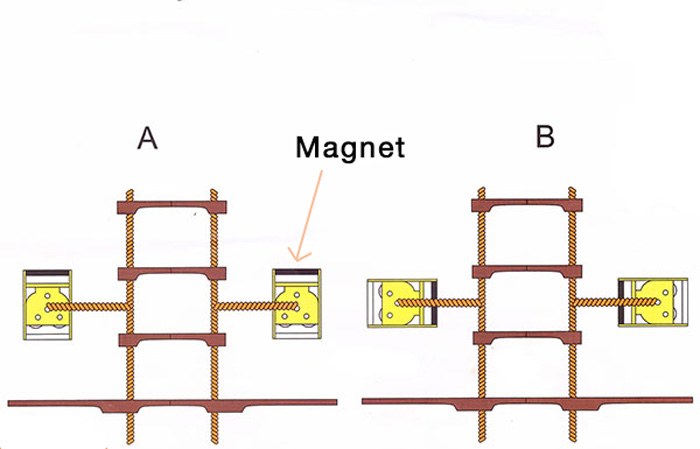
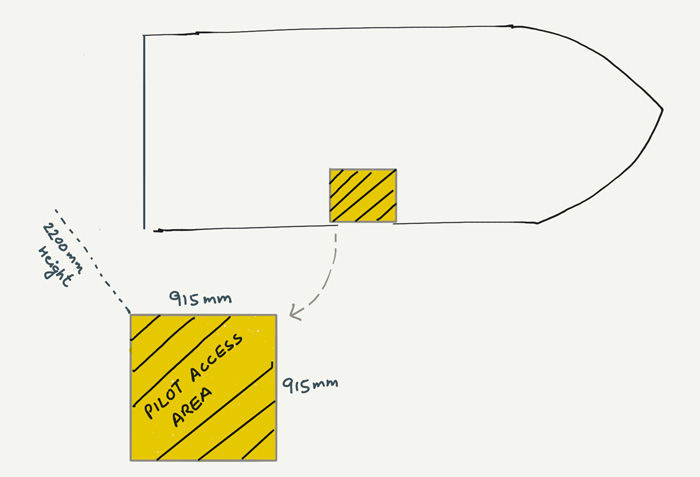
is there any certificate requirement also for embarkation ladder of life raft?